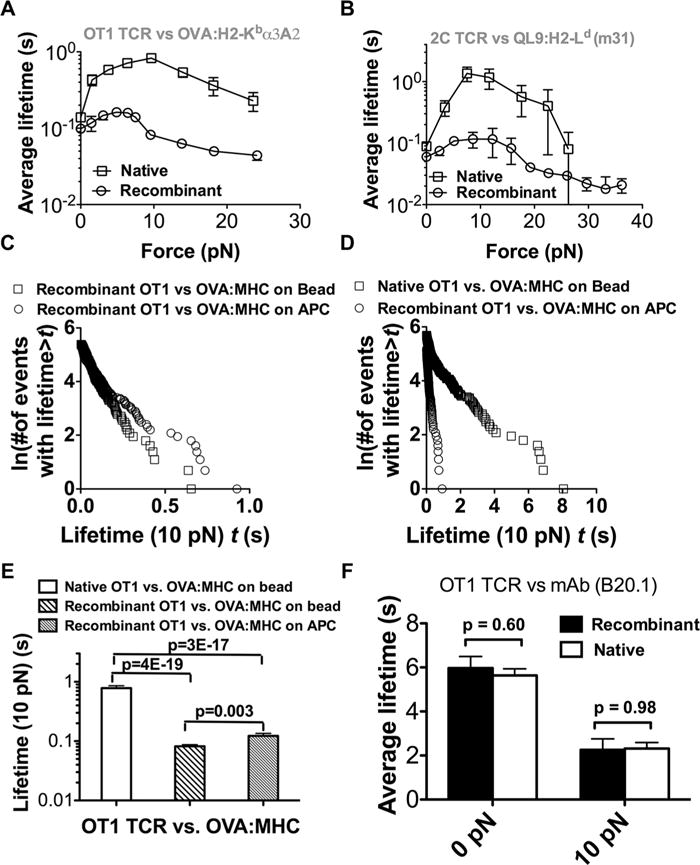Figure 2.

Substantially different force-dependent 2D off-rates between the native and recombinant TCRs but not native and recombinant pMHC. (A, B) Force-dependent average lifetimes of native (square) or recombinant (circle) OT1 (A) or 2C (B) TCR dissociating from OVA:H2-Kbα3A2 or QL9:H2-Ld (a minimal α1α2 variant of H2-Ld termed m31 presenting covalently linked peptides). (C) Comparison between lifetimes at 10 pN of recombinant OT1 TCR bonds with recombinant OVA:H2-Kbα3A2 (square) or APC-expressed H2-Kb loaded with the OVA peptide (circle). (A–C) Each force corresponds to >50 measurements of lifetime events. (D) Comparison between lifetimes at 10 pN of native OT1 TCR bonds with recombinant OVA:H2-Kbα3A2 (square) and of recombinant OT1 TCR bonds with APC-expressed H2-Kb loaded with the OVA peptide (circle). (E) Mean + SEM of >100 bond lifetimes under 10 pN for the three cases in (C, D). (F) Mean + SEM of >50 Bond lifetime of antibody binding to the recombinant OT1 TCR was the same as that to the native OT1 TCR at both 0 and 10 pN force. (A and B) Data are shown as mean ± SEM and (A–F) are pooled from one to five independent experiments.
